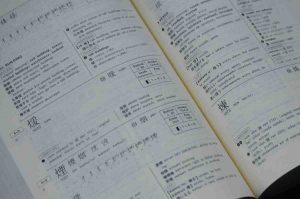Strategy to pass N2 – Liz
I studied for 日本語 whilst living in Japan, and passed the exam during my second year there.
I had sat ‚2級 (N2) in 2002, and decided to go for ‚Q‹‰ only a year later, not expecting to pass. Needless to say, I was very surprised that I did!
I put this unexpected achievement down to immersing myself in Japanese while I was living there.
However, I was also attending a class regularly and methodically ploughing through books listing all the grammar points and kanji that feature in the exam (definitely recommend the 実力アップ JLPT preparatory course series published by UNICOM).
It’s difficult to immerse yourself in Japanese when you’re not actually in Japan, but there are a few things you can do:
- Surround yourself with the ‘sound’ of Japanese by listening to Japanese music, watching films and especially getting hold of some Japanese TV programmes (borrow from Japanese friends, or see what’s available on the internet e.g. on youtube or Amazon.co.jp).

Japanese ‘dorama’ (soap operas) are excellent, especially the slushy sentimental ones, as you can usually understand what is going on without understanding everything that is being said, and the actors tend to speak quite slowly and in standard Japanese.
You will find that a lot of the ‚Q‹‰ ‘expressions’ come up regularly.
Go for dramas or films that depict modern-day, real-life settings (i.e. family, school, work situations) ? samurai epics or abstract anime may not be so helpful for passing exams! - Learn a Japanese song or two.
You can usually find the lyrics on the internet.
This can help to familiarise you with new vocabulary and grammar? although be careful you don’t end up using unusually flowery poetic language! - Getting used to the sound of Japanese through TV and music will help you with learning the context in which certain words are used, or what people actually mean when they are being quite vague.

This is really helpful for the listening section, e.g. 「それは、ちょっとね。」」 ーprobably means ‘No’.
- I think the reading section of the paper (the 1st half of Paper III) is the most important as each question carries more marks, so concentrate on practising this by getting hold of some past papers.
Don’t be put off by it as getting good marks on this section can really boost your overall score. Remember that to pass ‚Q‹‰ you need to get an average of 60% over all 3 papers so scoring highly in this section can really help.
- For kanji practice, try to get hold of some workbooks designed for Japanese children.
I think most of the ‚2級ー‰kanji are covered in the 6 years of 小学校, and working on the drill exercises contained in kanji practice books for kids can be a good way to drill them, and they’re usually quite fun.
Writing characters over and over again is how Japanese people learn them, and once you get attuned to writing kanji (paying attention to stroke order etc.) your reading of them also improves. Through writing kanji you get used to how they are made up from different particles, and the subtle differences between kanji are regularly tested in Paper I.
- Time yourself when doing past papers so you will know how much time you have for each section.
Many people complain that they run out of time in the exam itself, so you should be aware of how much time you need for each section and if necessary work on speeding yourself up.
On the whole, my strategy was to familiarise myself with the vocab., kanji and grammar and then observe how these are used in real-life situations. Studying from books or in the classroom is one thing, but you really want to be able to learn how this language is being used in the world.
Be encouraged that ‚2級 Japanese is really useful, commonly-used Japanese and once you master this level, you can go a LOT further in understanding conversations and expressing yourself.
がんばって
Elizabeth
